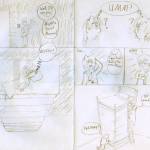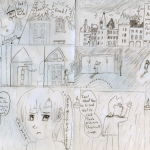Hello, all! Here’s my report on my personal favourite comic artist, Naoki Urasawa. All example pages are read from right to left.
Anansi Page 1 final version
I tried for a sort of “cutout” style. Final version made with The GIMP; the font used is Stranded BRK by Ænigma. Click on the image for the full size.
[redacted]
Rapunzel final and roughs
A couple of my finished pages plus one rough. Sorry for the faded-ness of the rough, my scanner doesn’t like pencil apparently…
Dave McKean
On the dedication page to Dave McKean and Neil Gaiman’s Violent Cases, McKean says, “To my teacher…This is what I mean by comics.” I don’t know the backstory behind this quote, but I can imagine someone, a teacher, telling McKean at some point that comics are for kids, that he was wasting his considerable talent on a medium forever locked to juvenile fantasies about muscle-bound guys in tights. And I imagine, (again, I don’t know any of this) Dave McKean holding up this book or, really, any number of his books, and saying, “Oh yeah? Then check this out.” Maybe it’s so easy for me to conjure up this scene because this is what I have done with his books whenever I’ve encountered somebody who is hesitant about the idea of comics as a real art form. This one is my go-to text, my “converter.”
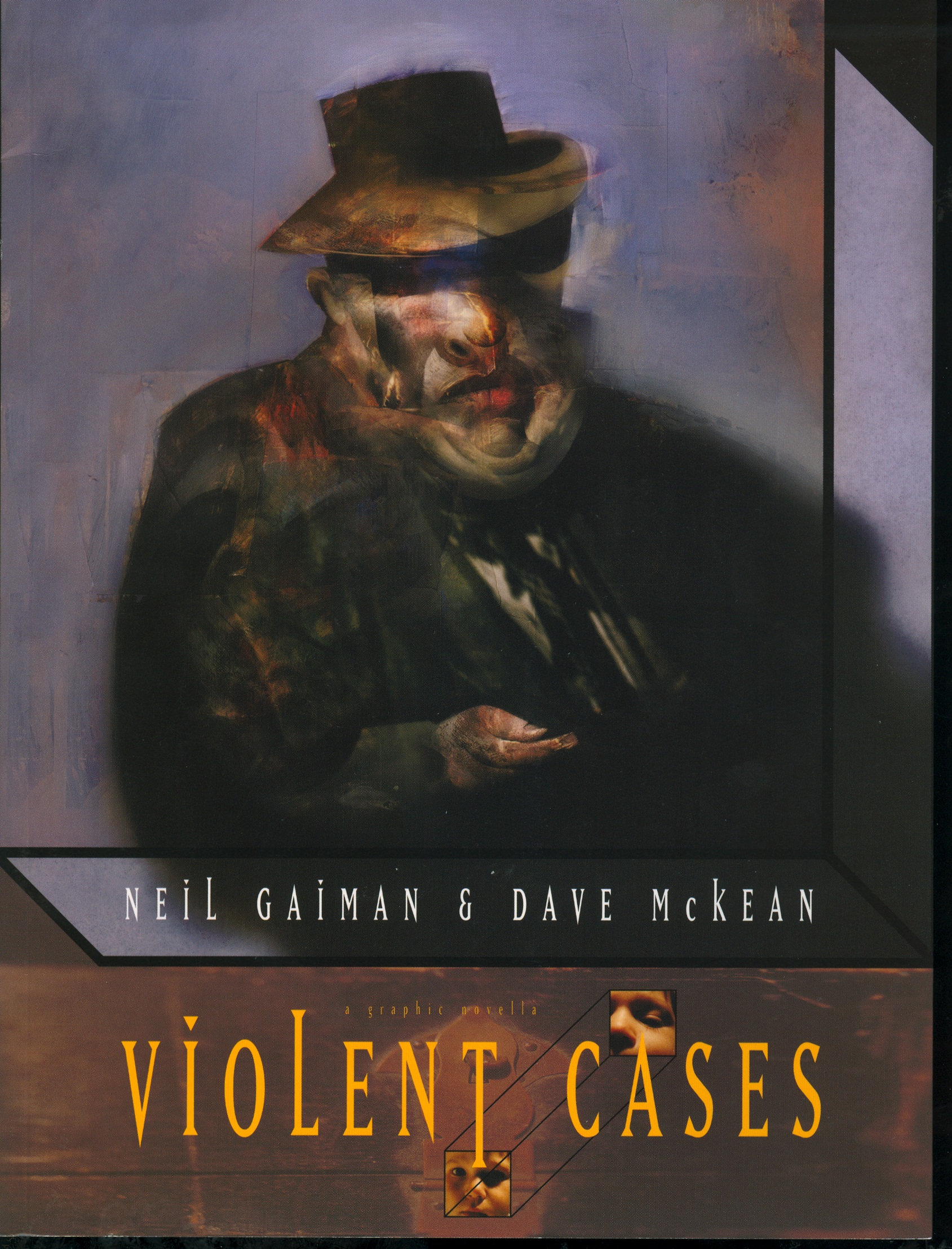
I love so many things about this artist’s work, it’s hard to put it all down. Mostly, it’s the painterly quality, I think. The sense that this is a made thing. Now that may sound silly. Of course it’s a made thing. Art doesn’t just appear or grow in your garden. What I mean is the sense one gets while looking at McKean’s work of the process, the hands behind the image. There are “drawing marks,” scribbles, slashes, places where it seems he has attacked the page with charcoal or color. The fact that some of these images have borders around them, that, taken in all, they support a narrative, does not detract from the individual dynamic qualities of the lines, the gestures, the strokes.
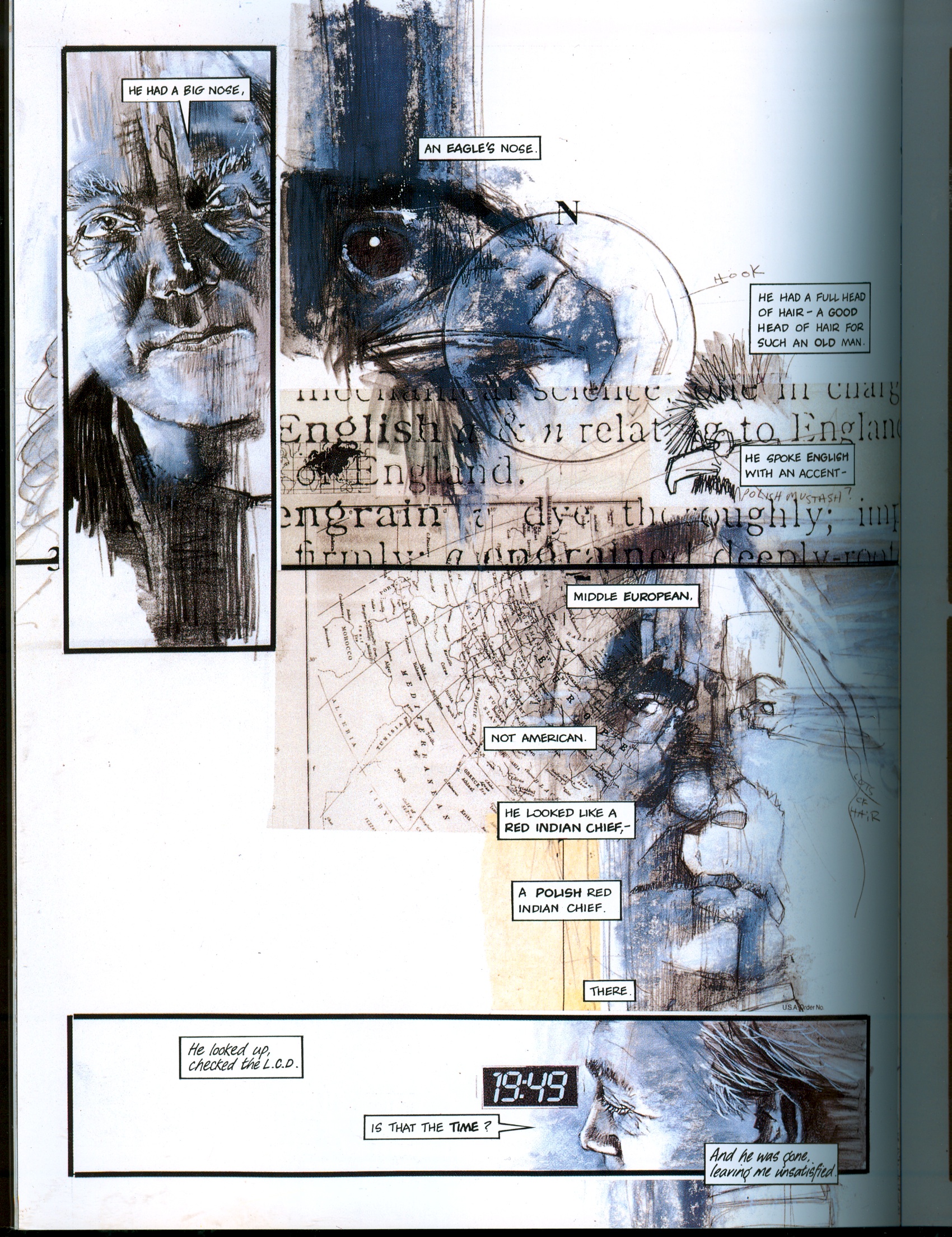
McKean was also the first artist I saw to incorporate what I assume is Photoshop into comic art. Look at the backgrounds of this piece, with the coat hangers, or the photo-quality of the boy’s coat. These, I think, are digitally enhanced photographs coupled with the loose pencil work of the drawing.

All this is not to say that McKean never draws those musclebound guys. He does, though less frequently, but, my, when he does, he totally reinvents them. In the graphic novel Arkham Asylum, written by Grant Morrison, McKean brings this same painterly style to a traditional superhero story: Batman must descend into the depths of Arkham, the place where all the bad guys he’s nabbed over the years are kept, and there he must do battle with the Joker. Pretty run-of-the-mill stuff as premises go, but the story is actually much better, and the art is incredible.

One way that this is unlike any superhero comic I’ve ever encountered is that you hardly ever get to see the hero. That is, Batman is there, but he’s almost always in shadow, concealed, hidden. Which is perfect, really. Both from a practical level (he’s a guy in dark costume running through shadows, sneaking up on bad guys), and on a symbolic level (this this a test of the character’s soul, a soul that is not all that cheery at the best of times.)
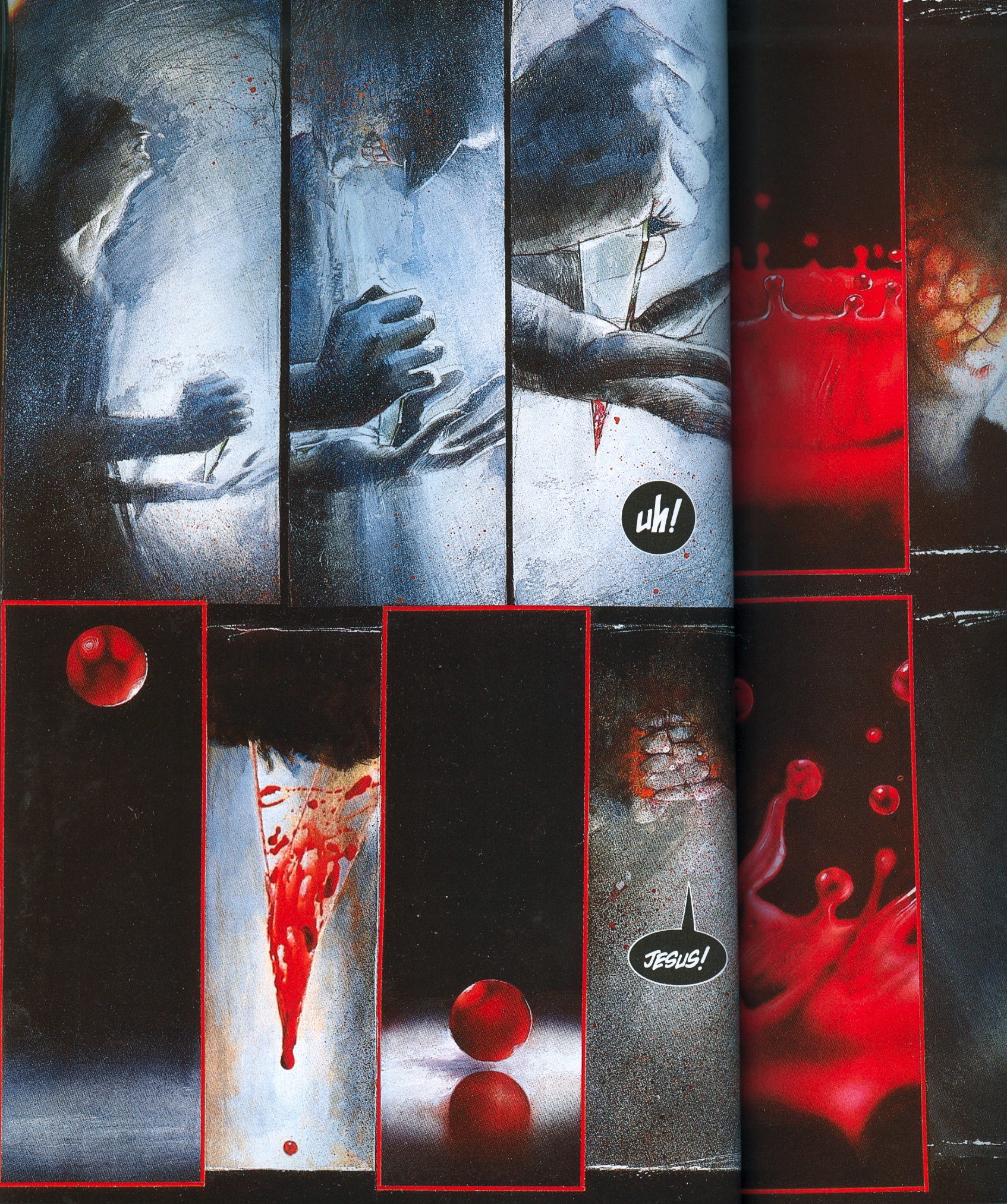
These glimpses of him in shadow, of the iconic silhouette are pretty much all we get, but then again, they’re all we need. Everything else is implied by the atmosphere that the paint and light create.
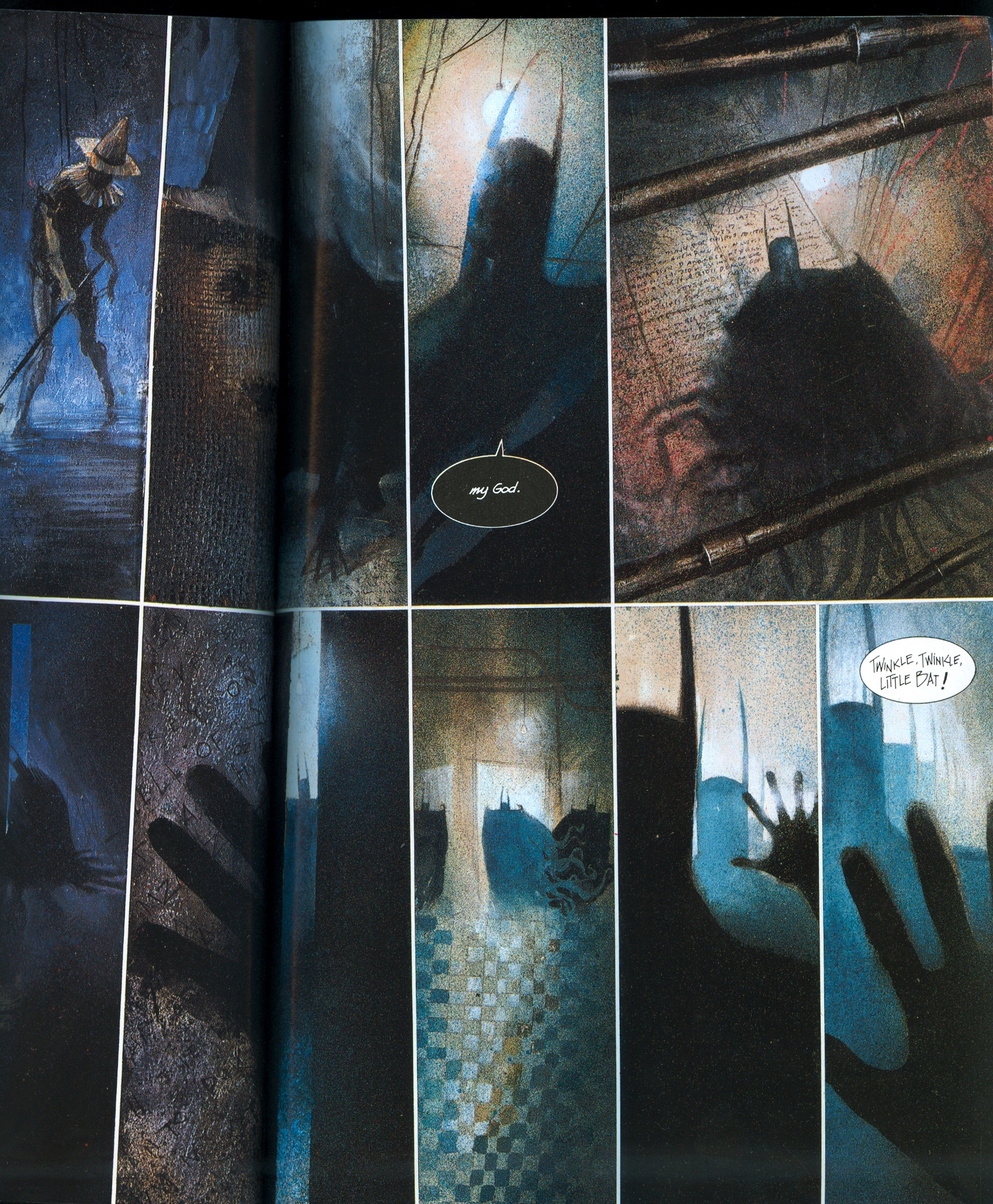
McKean has done a ton of other work: covers for Gaiman’s Sandman series, illustrations for Gaiman’s kids’ book, fully illustrated children’s book, costume designs for movies, a pack of tarot cards. The body of work is impressive, eery, and, to my mind, inspiring. I hope you enjoy.
Dr. Bernardy
Baba Yaga
Initially, for my Once Upon A Time project, I thought I’d do Hansel and Gretel. It’s iconic, everybody knows it, and with just three main characters, it seemed like an easy mark. But as I began looking at some source images for witches, I ran across a picture of the Baba Yaga, a witch figure in Russian folklore. Perhaps more importantly, I ran across a picture of her house. I knew then that given the choice between drawing a gingerbread house and drawing a house that runs around on chicken legs, chicken legs would win every time. Below are some character sketches for our heroine, Natasha, the evil Baba Yaga, and her amazing chicken-legged house. More to come… Dr. Bernardy
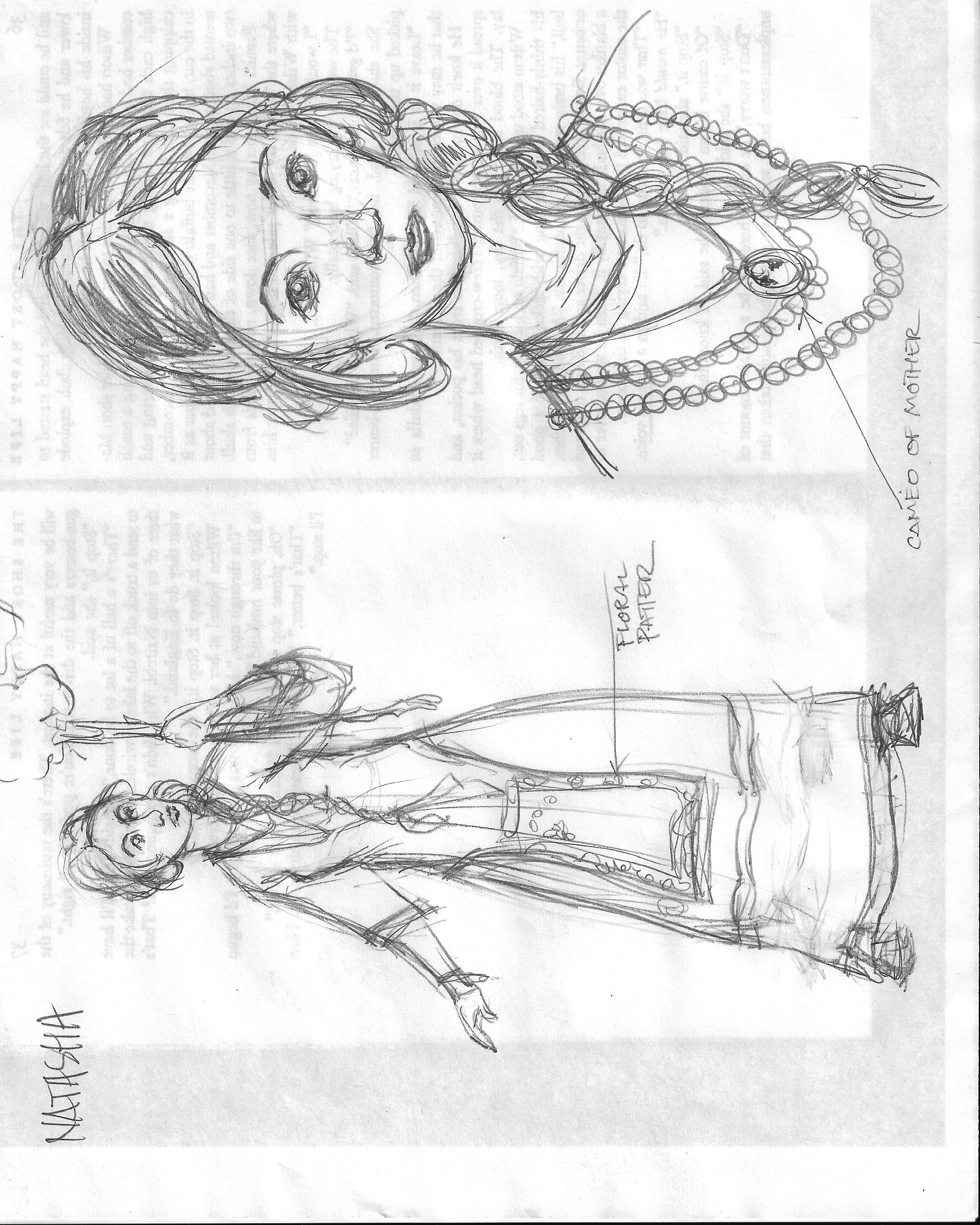

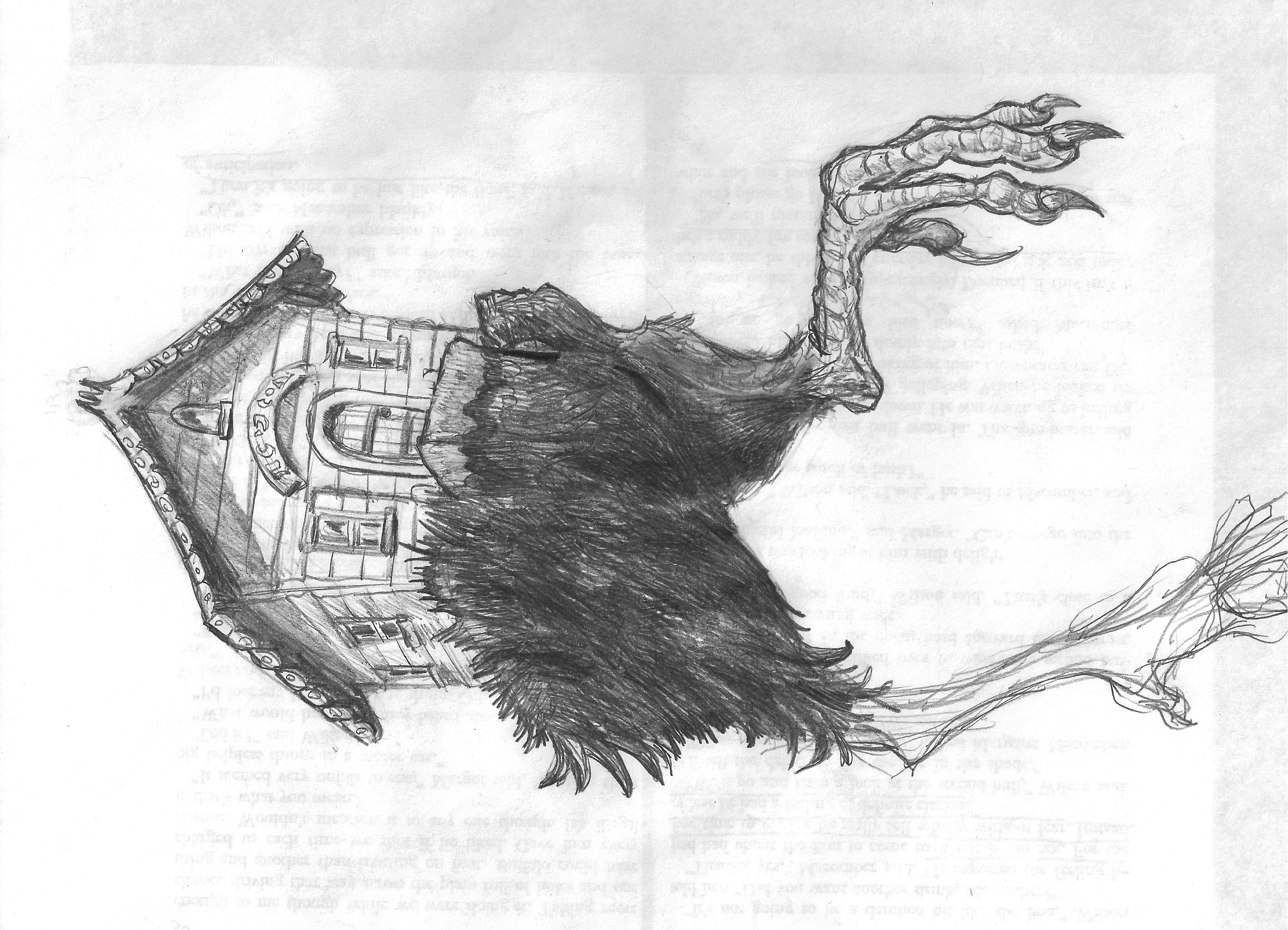
Roughs–The Seven Ravens
Here are some of my roughs/thumbnails. Rather than doing them in two separate stages, my thumbnails will serve also as my roughs–I will be working digitally, and will simply “paint” over the sketches. There are four pages represented on each page.
Images after the break.
-Rob
Project Once Upon A Time [Ellison’s Roughs]
Regrettably, while the Digital Express service on campus was the only place that had scanners big enough for the paper, they saved the images as a sideways PDF…ah well, here are some of my roughs.
[redacted]
Angles and Expressions
First, I found this a while back- “22 Panels That Always Work”, a set of 22 camera angles common in detective noir comics. (Scroll to the bottom for the actual panels.) Very interesting, and quite handy if you’re having difficulty coming up with imaginative angles.
Secondly, this is an excellent guide to drawing characters’ facial expressions. Granted, a lot of the pictures are of cats, but the information is just as useful if you’re drawing people. 🙂
Hannah
DYNAMIC PEA!!! RAWR >o<
Here are my best 3 thumbnail pages. Some panels are more detailed than others. Haha, I found it terribly ironic that Dr. Bernardy pretty much drew the princess’s twenty stacked mattresses almost identical to my thumbnail. It’s the typical “bird’s eye” view everyone thinks of I guess. Btw, please note that these are read right to left. It’s easier for me because that’s what I’m used to…lol…every time I pick up a comic I automatically look to the right. That’s why I don’t usually read Western style comics. They give me a headache reading backwards. *-*
(The pic to the right should be viewed first. Click each to enlarge.)
– Amy*Tapping microphone* Is this thing on?!
I hope I can get this to work in my favor. Anyway, I only uploaded one page of my thumbs since there were WAY too many at first. Not only that, I ended up drastically shortening my story so the thumbs I have are no longer accurate. I also uploaded two pages of my roughs. I hope you can see them relatively well.
Lauren Cloud

